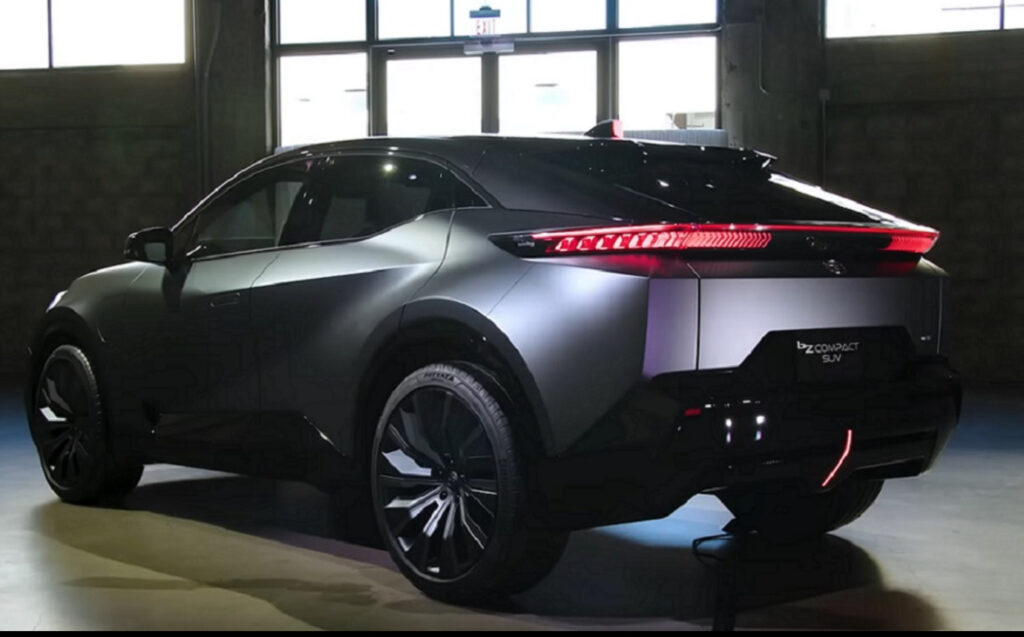In the race toward a sustainable automotive future, electric vehicles (EVs) have shifted from niche status to center stage. But even as the global market tilts in favor of electrification, a singular, unresolved challenge still looms: battery technology. Range anxiety, charging time, lifespan, and energy density continue to dog even the most advanced lithium-ion solutions. Yet a seismic shift may be imminent—and it’s coming from a perhaps unexpected source. After years of trailing behind Tesla and other EV leaders, Toyota is preparing to reshape the industry with the commercial launch of solid-state battery technology, an innovation long hailed as the holy grail of electric mobility.
Imagine an electric vehicle capable of traveling up to 750 miles on a single charge, lasting over three decades, and fully recharging in under ten minutes—without the fire risks and thermal management headaches that plague current EVs. That future, Toyota suggests, is not in the distant realm of science fiction, but just over the horizon.
From Hybrid Pioneer to EV Challenger
Toyota’s image in the electrification race has long been paradoxical. On one hand, it launched the world’s first mass-market hybrid, the Prius, in 1997—a milestone that transformed the conversation around sustainable driving. On the other, it remained reluctant to fully embrace all-electric vehicles, choosing instead to double down on hybrids and hydrogen fuel cells while competitors like Tesla, BYD, and Hyundai expanded aggressively into battery-electric platforms.
The reasons for this hesitation were both strategic and technological. Toyota has always approached powertrain transitions with a long-term view, wary of betting on interim solutions. Internally, there was concern that lithium-ion batteries, while powerful, were ultimately constrained by fundamental limitations—chief among them safety, degradation, and energy density. Instead of simply matching Tesla’s playbook, Toyota sought to leapfrog it.
That leap takes the form of solid-state batteries, a technology the automaker has been quietly developing for over a decade in partnership with researchers and materials scientists around the world.
What Is a Solid-State Battery—and Why Does It Matter?
To understand Toyota’s potential breakthrough, it’s essential to grasp the basics of solid-state battery technology. Conventional lithium-ion batteries use a liquid electrolyte to transport ions between the anode and cathode. While effective, this liquid is flammable, prone to leaking, and requires elaborate cooling systems to ensure safety. As EVs scale globally, the risks and inefficiencies of these batteries pose serious barriers to adoption.
Solid-state batteries replace the liquid electrolyte with a solid conductive material—typically a ceramic or glass-based compound. This shift yields several key advantages:
- Higher energy density, enabling longer driving ranges.
- Faster charging, with the potential for full top-ups in under ten minutes.
- Longer life cycles, reducing the frequency and cost of battery replacement.
- Improved safety, as the solid-state structure minimizes fire risk.
For years, the promise of these advantages has fueled research labs and patent offices, but commercialization remained elusive. Manufacturing challenges, high costs, and material limitations kept solid-state batteries in the prototype phase. Toyota now claims to have cracked this technological impasse—and intends to scale production within the next few years.
Toyota’s Breakthrough and Its Implications
Toyota’s announcement of a solid-state EV battery capable of a 750-mile range has sent shockwaves through the auto industry. According to internal projections, the company aims to mass-produce this technology by 2027–2028, ushering in a new generation of EVs that could render current lithium-ion models outdated overnight.
The automaker’s upcoming EVs—part of its next-gen platform known as “BEV Factory”—are designed to accommodate this new technology. More than just a battery swap, Toyota is reengineering its entire EV architecture to support thinner, lighter, and more energy-dense components. The resulting vehicles are expected to be 20% more efficient, 40% cheaper to produce, and up to 50% faster to charge than their predecessors.
But it’s not just about the numbers. Toyota’s solid-state development signals a profound shift in the competitive landscape. While Tesla focuses on refining its 4680 lithium-ion cells and vertically integrating battery production, Toyota is betting on a technological revolution that could re-center the industry around safety, durability, and extreme range.
The Road to Commercialization: Challenges and Cautions
Still, the road from prototype to production is fraught with hurdles. Manufacturing solid-state batteries at scale involves complex engineering and strict material tolerances. One of the main challenges lies in producing thin, defect-free solid electrolytes that can withstand thousands of charge cycles without cracking. Even minor flaws in the solid interface can lead to battery failure.
Moreover, the high cost of advanced materials like lithium metal, and the requirement for new factory tooling, means that initial models may be priced at a premium. Toyota has been strategically mum about which vehicle will debut the technology, but analysts expect it to appear first in a halo product—perhaps a high-end Lexus EV—before trickling down to mass-market models.
Environmental considerations also loom. While solid-state batteries are more stable and potentially more recyclable, the sourcing of rare materials like lithium, cobalt, and nickel remains a global concern. Toyota has reportedly invested in developing alternative chemistries and closed-loop recycling systems to address the lifecycle impact of its next-gen batteries.
Global Impression and the Shifting EV Ecosystem
If Toyota’s solid-state battery achieves even a fraction of its projected benchmarks, the ripple effects will be global. For consumers, it means EVs that charge as quickly as filling a gas tank, with ranges that rival internal combustion cars. For infrastructure, it relieves pressure on charging networks and grid capacity. For governments, it accelerates timelines for combustion engine phaseouts.
Crucially, it could change the psychology of EV adoption. One of the biggest barriers to mass transition is perception—drivers worry about running out of power, long charge times, and degraded battery performance after a few years. A solid-state battery erases those fears. It promises durability on par with engine blocks, convenience exceeding gasoline refueling, and resilience against extreme climates.
Toyota’s move also realigns the power dynamics of the EV space. Tesla may have been first to scale, but Toyota’s global production network, legendary supply chain discipline, and conservative balance sheet make it a formidable force in a mature EV era. If it delivers on its promise, Toyota could reclaim its title—not just as the world’s largest automaker, but as the most forward-thinking one.
The EV Holy Grail or Industry Mirage?
Of course, skeptics abound. The term “solid-state” has been thrown around for years, often with more marketing sizzle than technical substance. Companies like QuantumScape, Samsung SDI, and CATL have all announced breakthroughs, but none have yet produced a commercially viable solid-state EV.
Toyota, for its part, has kept development tightly under wraps, revealing only what it must to maintain momentum and investor confidence. This strategy may stem from Toyota’s cultural ethos: underpromise, overdeliver. Still, until a drivable, scalable solid-state EV hits showrooms, the promise remains speculative.
Yet even as the timeline stretches, Toyota’s entry into the field provides a credibility boost that few others can offer. Unlike startups with limited resources or experimental timelines, Toyota’s slow, methodical pace is often a sign that real disruption is brewing.
Looking Ahead: A New Chapter in Mobility
In the next five years, the EV market is poised for radical evolution. With China leading the charge in affordability and domestic scale, and Europe tightening emissions policies, the United States and Japan will need to respond with innovation, not just incentives.
Toyota’s solid-state vision could serve as the linchpin technology that moves EVs from early adoption into ubiquity. Paired with AI-driven driving systems, renewable energy charging grids, and circular manufacturing, solid-state batteries may not just change the car—they may redefine what mobility means in the 21st century.
As we edge closer to this inflection point, the auto industry finds itself in a familiar place: holding its breath as Toyota prepares to make its move.
No comments yet.









